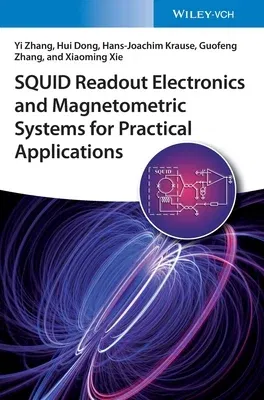Hands-on guide for scientists and engineers on how to use SQUID
technology
This practical book covers SQUID (superconducting quantum interference
device) readout electronics and magnetometric systems. It illustrates
their many practical applications in measuring extremely subtle magnetic
fields and shows how the technique is developing into an enabling
technology for many applications, such as biomagnetic imaging and
geophysical prospecting. Clear and comprehensive, the book builds a
bridge for scientists and engineers to fill in potential know-how gaps
for all who work on SQUID systems and their practical applications. It
helps make key words like readout electronics, flux quantization,
Josephson effects, and noise contributions completely understandable to
all who design and use simple and robust SQUID systems.
Beginning with an introduction to the subject, SQUID Readout
Electronics and Magnetometric Systems for Practical Applications offers
in-depth chapter coverage of: Josephson junctions; dc SQUID's I-V
characteristics and its bias modes; functions of the SQUID's readout
electronics; direct readout scheme (DRS); SQUID magnetometry system and
SQUID parameters; flux modulation scheme (FMS); and flux feedback
concepts and parallel feedback circuit. Other sections examine: analyses
of the "series feedback coil (circuit)" (SFC); weakly damped SQUID;
two-stage and double relaxation oscillation readout schemes; and
radio-frequency (rf) SQUID.
- Provides a unique view of how simplicity and robustness are crucial
for practical SQUID systems in applications
- Focuses on the readout electronics of SQUID systems, particularly the
advantages and disadvantages of the various systems
- Helps materials scientists, physicists, and engineers overcome various
major know-how barriers in order to understand the important challenges
and to design practical SQUID systems
- Largely documents the joint achievements accomplished in the
cooperation between SIMIT and FZJ in the field of superconducting
electronics
SQUID Readout Electronics and Magnetometric Systems for Practical
Applications is an excellent book for all materials scientists,
electrical engineers, and physicists who can benefit from SQUID systems
and their applications. It will also be of great benefit to analytical
laboratories in industry, manufacturers of laboratory equipment, and
systems engineers.

